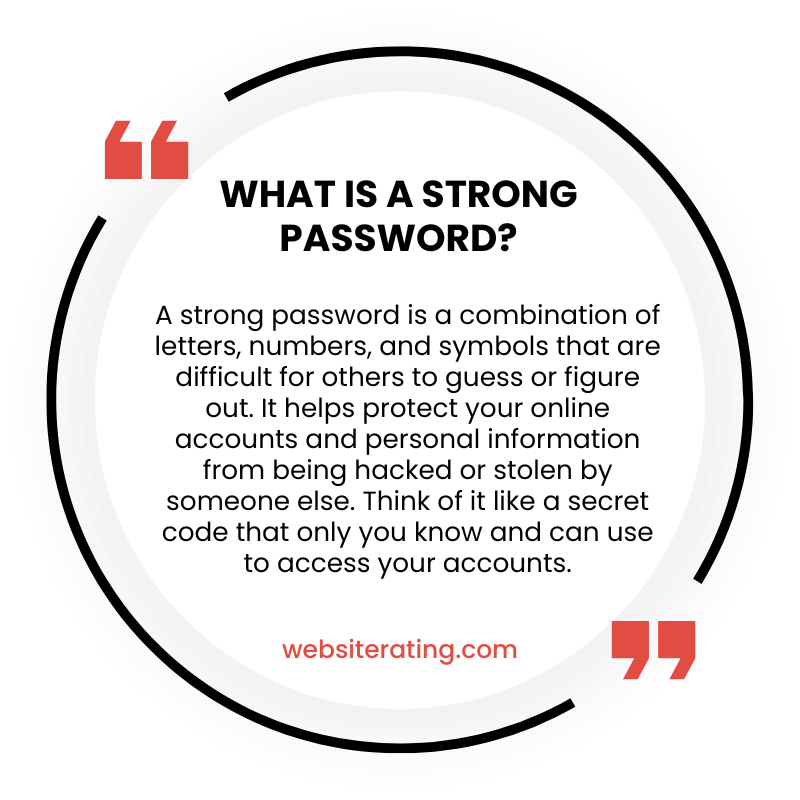A strong password is a fundamental component of any secure digital environment. It provides an additional layer of security, ensuring that unauthorized access to sensitive information and accounts is prevented.

This article will provide an overview of what constitutes a strong password, as well as useful guidelines on creating one. Moreover, it will also discuss the basics of password managers and how they can help users create and manage secure passwords with ease.
What is a Strong Password?
Ensuring the safety of one’s digital information is a critical task that should not be taken lightly, as it can have serious consequences if done inadequately. A strong password is essential when it comes to protecting private data from the many malicious actors lurking online.
A strong password can be defined as a combination of characters that makes it difficult for someone to guess or break into an account. This includes using a mix of upper and lowercase letters, numbers, and special characters such as @#$%^&*()~. It should also be long enough so that it takes too long for a hacker to crack it with brute force methods. For example, instead of using “password” or “12345678” as your password, use something like “8F!@9#kAo” which contains all four character types and is longer than eight characters.
Moreover, passwords should not include personal information such as birthdays or family names; these are typically easy guesses for hackers because they can easily find this type of information through social media sites or other public sources. Finally, individuals should make sure to change their passwords regularly; this will help further protect against any potential attacks and keep their data secure.
Password Manager Basics
A Password Manager is an important tool for protecting sensitive data, and it is beneficial to know the basics of its usage.
Password Managers are digital tools that store user credentials in a secure location. They can be used to store passwords, credit card information, bank accounts, online payments, and other personal information. Additionally, they offer extra features such as password generation and synchronization across multiple devices.
Password managers are designed with privacy and security in mind; they employ strong encryption algorithms to protect user data from external threats. Furthermore, these managers usually allow users to create complex passwords that may be difficult to crack by hackers.
Finally, some password managers also have integrated two-factor authentication for an added layer of protection against malicious attacks.
Best Practices for Creating a Secure Password
Creating a secure password is essential for protecting sensitive data from malicious attacks. Generally, a strong password should be at least eight characters in length and contain a mix of uppercase and lowercase letters, numbers, and symbols. It should not include any words found in the dictionary or personal information such as birthdate or address.
Additionally, it is important to avoid reusing passwords across multiple accounts; instead, create unique passwords for each account. The most secure passwords are those that combine randomly generated strings of characters that are difficult to guess or crack by guessing algorithms.
A password manager can help users generate random passwords with ease while also securely storing them for later use.
Summary
Creating a secure password is essential for keeping online accounts, information, and data safe. A strong password should contain at least 8 characters that include uppercase and lowercase letters, numbers, symbols, and spaces.
It is important to create unique passwords for each account and to avoid using personal information as part of the password. Password managers can be used to store multiple passwords securely while providing users with an easy way to access their logins.
To ensure complete security, it is important for users to keep their master password confidential. By following best practices when creating passwords, users can protect themselves from cyber criminals and keep their accounts secure.
More reading
A strong password is a combination of uppercase and lowercase letters, numbers, and symbols that is at least 12 characters long, but preferably 14 or more. It should not be a word that can be found in a dictionary or the name of a person, character, product, or organization. Creating a strong password is important for password security and is a vital part of keeping cybercriminals at bay (source: Microsoft Support, TechRadar, Wikipedia).
